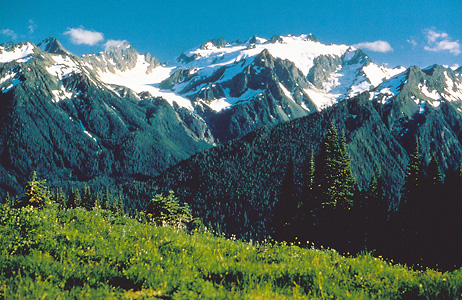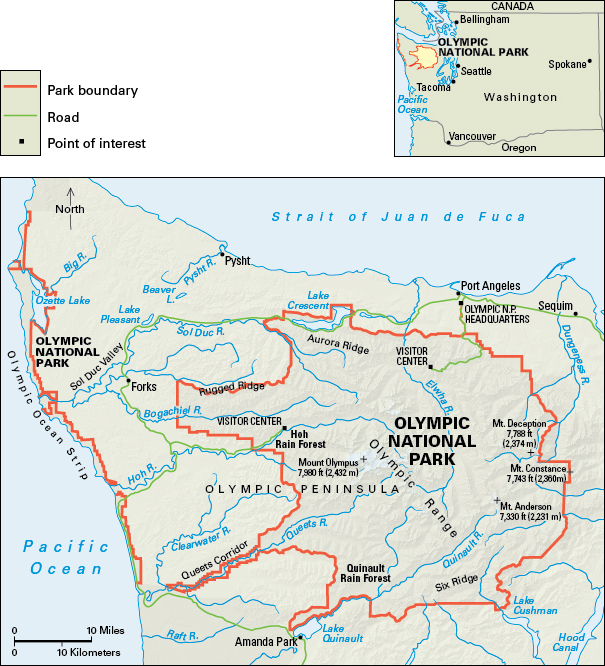Olympic, << oh LIHM pihk, >> National Park lies in the Olympic Peninsula of Washington, not far from Seattle and Tacoma. The jagged peaks of the Olympic Range cover much of the national park. For the area of Olympic National Park, see National Park System (table: National parks) . The park has campgrounds and winter sports activities for tourists. Olympic National Park headquarters are at Port Angeles, Washington, a resort city on the Strait of Juan de Fuca.

Of special interest are the rain forests consisting mainly of Sitka spruce, western hemlock, western red-cedar, and Douglas-fir. These rain forests, resulting from good soil and exceptionally heavy rainfall, are almost tropical in luxuriance, with an undergrowth of vine maple, bigleaf maple, ferns, and other junglelike growth. Mosses drape the branches and tree trunks. The park is the home of the world’s largest herd of Roosevelt elk, estimated at 5,000 animals. Other wildlife species include black bear, cougar, and black-tailed deer.

This wilderness of glacier-clad peaks, flower-strewn alpine meadows, turbulent streams and jewel-like lakes, and deep valleys supporting a rich forest growth is often described as America’s “last frontier.” Highways penetrate only its outer fringes, but the park has several hundred miles of hiking and horseback riding trails. Nearly 1,000 varieties of flowers grow in the park’s meadows and on its mountain slopes. Some varieties, such as the Piper bellflower, grow nowhere else.

Part of this region was set aside as Mount Olympus National Monument by President Theodore Roosevelt in 1909. In 1938, President Franklin D. Roosevelt signed the act establishing Olympic National Park. The park was formally dedicated in 1946. The Queets Corridor and Olympic Ocean Strip were added to the park by presidential proclamation in 1953.
